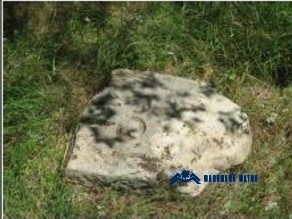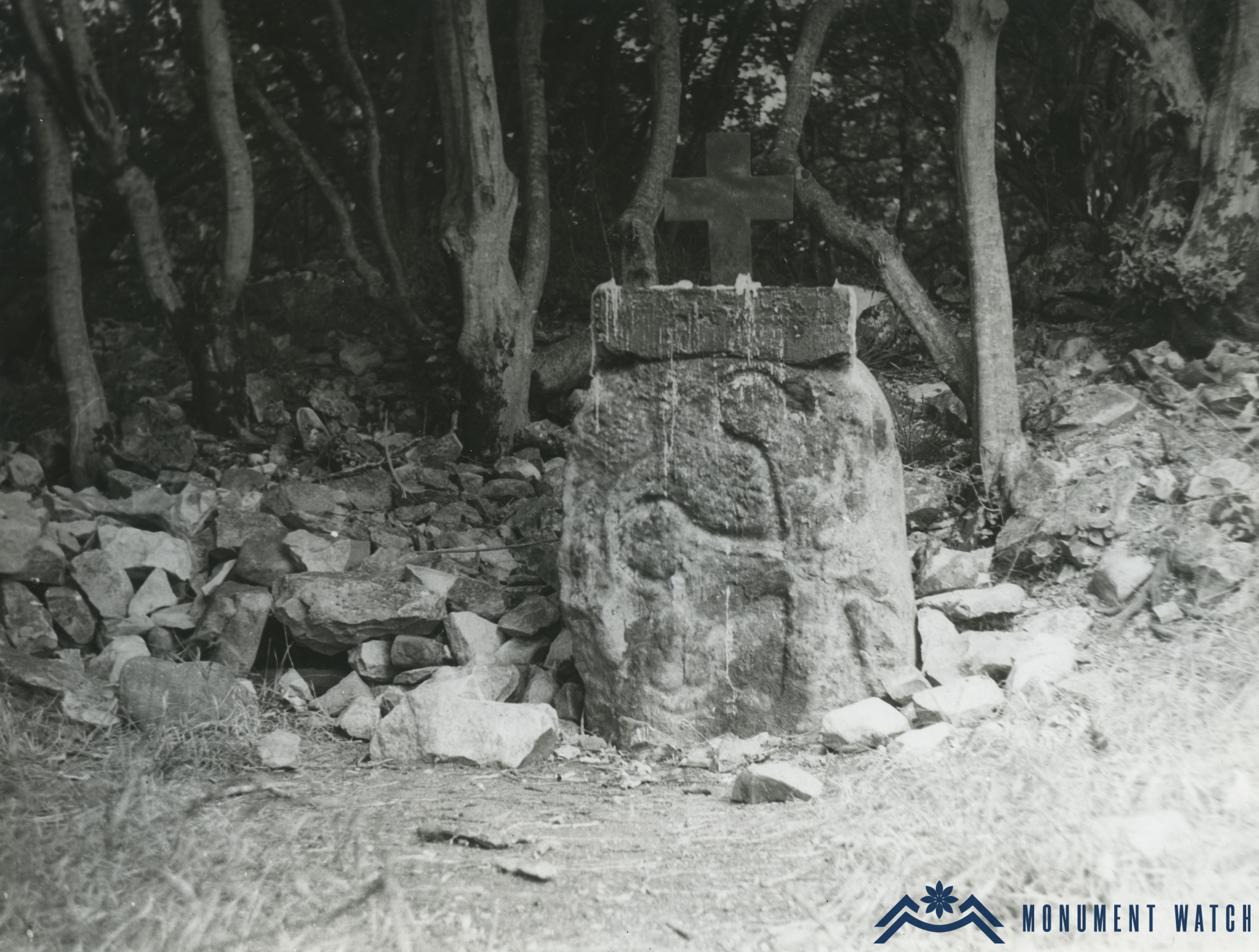The “Astghablur” Sanctuary
Location
The monument is located 2.6 km east of the village of Haterk in the Martakert District of the Republic of Artsakh. It has been occupied by Azerbaijan since September 2023.
Historical Overview
Movses Kaghankatvatsi, Sargis Jalalyants, and S. Barkhudareants' works preserve information about the "Astghablur" sanctuary.
In particular, Movses Kaghankatvatsi's account contains intriguing details regarding "Astghablur." When describing the northern tribes' expedition into Artsakh and the martyrdom of the Holy Queen, the historian writes: "After that, on that very night when the prince of the foreign tribes was feasting with his warriors—on that sleepless night when they strolled joyfully, made merry, and amused themselves—a wondrous sign from the Lord suddenly appeared to them. All saw clearly how a brilliant light fell upon the spot where Saint Tagui had been tortured, and the shreds of her garment, scattered and carried by the wind through the forest, gleamed like stars. For a long time thereafter, the light that had appeared there, like stars, shone over the holy martyrs. Many people witnessed this, and from then until now, the place has been called Astghablur.
Seeing these blessed miracles, the prince was greatly astonished and fell into deep turmoil. He commanded that the priests of the Lord be brought to him, and, having learned from them the way of salvation, he believed in the living God. He then ordered the relics of the saints to be gathered, wrapped in pure linen cloth, and buried with blessing on that hill. Afterwards, they sacrificed sheep and goats and lavishly celebrated the Lord's feast, commemorating the saints they had martyred"(Kaghankatvatsi 1984, 63).
According to M. Barkhudaryants, in his account of the sanctuaries near the village of Haterk, Astghablur is "a hill situated on the left bank of the Tartar, to the east of the village. At its summit stands an ancient chapel with a tomb inside, which served as a major pilgrimage site. But now the chapel's vault has collapsed" (Barkhudaryants 1895, 201).
Jalalyants describes Astghablur as “a small mountain in the province of Artsakh. It is very picturesque. According to the oral traditions of the local inhabitants, many Christians suffered martyrdom on this mountain for the faith in Christ, and for many days thereafter their bones shone with a bright light—hence the mountain acquired the name Astghablur” (Jalalyants 2016, vol. 1, 185).
Sh. Mkrtchyan adds, "The site lies in a forest, four kilometers from Haterk. The partially ruined walls of a chapel built of hewn stone still stand. This is a well-known place of pilgrimage, which is mentioned in the history of Movses Kaghankatvatsi. According to tradition, within this chapel rests the dust of Queen Astghik, who met a martyr’s death” (Mkrtchyan 1989, 44).
Architectural-compositional examination
The monument is situated on a wooded hill and covers an area of three hectares (Figs. 1–4). On the summit stands an ancient khachkar (Fig. 5). According to local tradition, the body of the queen-martyr Astghik is interred here (passport of the Ministry of Culture, Youth and Sport of the Republic of Artsakh). However, in the account of M. Kaghankatvatsi, the martyr is called Taguhi: "Among them was a woman named Taguhi from the village of Bagink in the canton of Utik, belonging to the indigenous azats of the land, a person of considerable rank, who had joined the Jerusalemites." (Kaghankatvatsi 1984, 62).
The condition Before, During, and After the War
Before the war, the monument was semi-ruined. No information is currently available about its condition.
Bibliography
- Kaghankatvatsi 1983 - Kaghankatvatsi M., The History of the Land of Aghuand (critical edition of the original text and introduction by V. Arakelyan). Yerevan.
- Barkhutareants 1895 - Barkhutareants M. Artsakh. Baku.
- Jalalyants 2016 - Jalalyants S. Journey to Greater Armenia, Part 1.
- Mkrtchyan 1989 - Mkrtchyan Sh.Historical and Architectural Monuments of Nagorno-Karabakh. Yerevan.
The “Astghablur” Sanctuary
Artsakh




